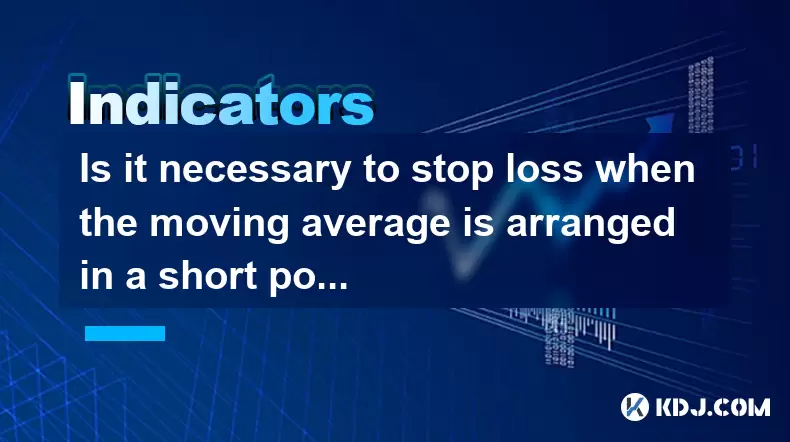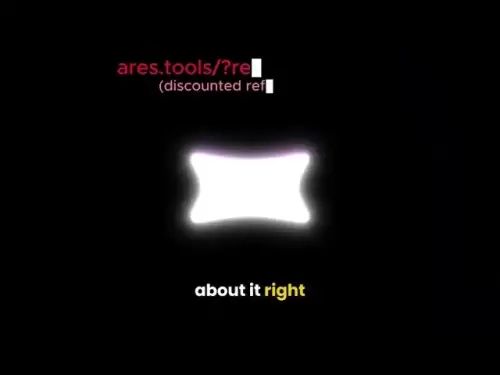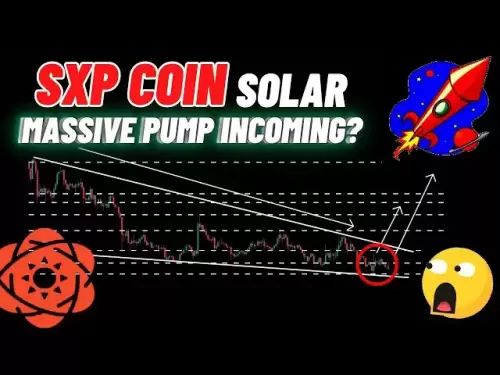-
 Bitcoin
Bitcoin $117500
2.04% -
 Ethereum
Ethereum $3759
3.02% -
 XRP
XRP $3.171
3.30% -
 Tether USDt
Tether USDt $1.000
0.03% -
 BNB
BNB $782.4
2.52% -
 Solana
Solana $187.2
5.62% -
 USDC
USDC $0.0000
0.02% -
 Dogecoin
Dogecoin $0.2380
5.26% -
 TRON
TRON $0.3175
1.07% -
 Cardano
Cardano $0.8227
4.03% -
 Hyperliquid
Hyperliquid $44.50
5.44% -
 Sui
Sui $4.020
10.07% -
 Stellar
Stellar $0.4396
6.28% -
 Chainlink
Chainlink $18.32
4.55% -
 Hedera
Hedera $0.2628
10.71% -
 Bitcoin Cash
Bitcoin Cash $554.8
4.90% -
 Avalanche
Avalanche $24.20
4.60% -
 Litecoin
Litecoin $113.7
2.31% -
 Shiba Inu
Shiba Inu $0.00001413
5.99% -
 UNUS SED LEO
UNUS SED LEO $8.984
0.11% -
 Toncoin
Toncoin $3.326
7.22% -
 Ethena USDe
Ethena USDe $1.001
0.00% -
 Uniswap
Uniswap $10.49
4.56% -
 Polkadot
Polkadot $4.092
4.02% -
 Monero
Monero $326.6
1.30% -
 Dai
Dai $1.000
-0.01% -
 Bitget Token
Bitget Token $4.570
2.49% -
 Pepe
Pepe $0.00001267
5.10% -
 Aave
Aave $297.3
3.10% -
 Cronos
Cronos $0.1344
4.10%
Is it necessary to stop loss when the moving average is arranged in a short position but the trading volume shrinks?
A bearish moving average crossover with shrinking volume suggests weak selling pressure, prompting traders to reconsider stop loss placement and avoid premature exits.
Jun 28, 2025 at 11:49 pm

Understanding Moving Averages and Short Positions
In cryptocurrency trading, moving averages (MAs) are among the most widely used technical indicators. Traders rely on them to identify trends and potential reversals. When moving averages are arranged in a short position, it typically means that shorter-term MAs have crossed below longer-term ones—a bearish signal known as a "death cross." This arrangement often prompts traders to consider entering short positions.
However, when this bearish setup coincides with shrinking trading volume, it raises an important question: should one still apply a stop loss? The answer is not straightforward and requires deeper analysis of market dynamics and trader psychology.
Key Insight: A short position based solely on MA alignment without confirming volume may lead to premature exits or unnecessary losses.
The Role of Trading Volume in Confirming Trends
Trading volume serves as a critical confirmation tool for price movements. In traditional technical analysis, rising prices accompanied by increasing volume suggest strong buyer interest, while falling prices with high volume indicate aggressive selling pressure. Conversely, low or shrinking volume during a downtrend may imply that the selling momentum is waning.
When moving averages form a bearish pattern but volume declines, it suggests that the downward movement might lack conviction. In such cases, traders must be cautious about blindly applying stop losses, as the market could be consolidating rather than continuing its downward trajectory.
Key Insight: Shrinking volume can indicate weakening trend strength, which may warrant a reevaluation of stop loss placement.
Stop Loss Mechanism and Risk Management
A stop loss is a risk management tool designed to limit losses on a trade. It automatically closes a position when the price reaches a predetermined level. While essential for protecting capital, stop loss levels should not be set arbitrarily. They should align with both technical setups and market behavior.
In a scenario where a trader enters a short position due to a bearish MA crossover but observes declining volume, the following steps should be considered:
- Analyze candlestick patterns to see if there’s rejection at key support/resistance levels.
- Check for divergences between price and volume or other oscillators like RSI or MACD.
- Observe consolidation zones where price might pause before resuming a move.
- Adjust stop loss levels wider than usual to avoid being stopped out prematurely.
Key Insight: Stop loss levels should be flexible and responsive to evolving market conditions, especially when volume doesn't confirm the trend.
Practical Application: How to Handle This Scenario
Let’s walk through a practical example using Bitcoin/USDT on a 4-hour chart:
- Identify the MA alignment: 50-period MA crosses below the 100-period MA, suggesting a bearish trend.
- Monitor volume bars: Observe that volume has been consistently decreasing over the last few candles.
- Assess recent price action: Look for signs of indecision such as doji candles or tight-range consolidation.
- Determine entry point: Consider entering the short trade only after a clear breakdown from a support level.
- Set dynamic stop loss: Place the stop loss above the recent swing high, but monitor volume to decide whether to trail or adjust it.
This approach ensures that you're not reacting impulsively to a bearish signal but are instead incorporating volume and price behavior into your decision-making process.
Key Insight: Integrating multiple signals—such as volume, candlesticks, and moving averages—leads to more informed stop loss decisions.
Psychological Factors and Behavioral Biases
Traders often fall prey to confirmation bias, where they interpret information in a way that supports their existing beliefs. For instance, seeing a bearish MA crossover may push a trader to short aggressively, even if volume does not support the move. In such cases, rigid stop loss rules can exacerbate emotional trading.
It's crucial to maintain a disciplined mindset and understand that no single indicator provides foolproof signals. Combining technical tools with behavioral awareness helps prevent impulsive actions. If volume shrinks despite a bearish MA setup, it may be wise to reduce position size or wait for clearer confirmation before tightening stop losses.
Key Insight: Emotional discipline and multi-indicator analysis are key to avoiding costly stop outs during ambiguous market phases.
Frequently Asked Questions
Q: Can I ignore volume if moving averages show a strong short-term bearish trend?
A: No. Volume acts as a validation mechanism. Without supporting volume, a bearish MA crossover may result in false signals. Always cross-check with volume and other indicators before acting.
Q: Should I close my position entirely if volume starts shrinking during a downtrend?
A: Not necessarily. Shrinking volume may indicate a pause rather than a reversal. Monitor for any sign of trend continuation or reversal before making drastic moves.
Q: How can I differentiate between healthy pullbacks and trend reversals when volume is low?
A: Use Fibonacci retracement levels and look for confluence with support/resistance zones. Also, observe candlestick formations for clues on whether the trend is likely to resume.
Q: Is there a specific volume threshold that confirms a bearish trend?
A: There is no universal threshold. Instead, compare current volume levels to historical averages and watch for relative changes. A sudden drop in volume after a sharp decline may indicate exhaustion.
Disclaimer:info@kdj.com
The information provided is not trading advice. kdj.com does not assume any responsibility for any investments made based on the information provided in this article. Cryptocurrencies are highly volatile and it is highly recommended that you invest with caution after thorough research!
If you believe that the content used on this website infringes your copyright, please contact us immediately (info@kdj.com) and we will delete it promptly.
- Vaultz Capital's Bitcoin Bet: A Strategic Shift on the Aquis Exchange
- 2025-07-26 20:30:12
- Pi Coin, Wallet Features, and Coinbase: What's the Buzz?
- 2025-07-26 18:30:12
- Worldcoin, Punisher Coin, and the Meme Coin Mania: What's the Haps?
- 2025-07-26 18:30:12
- Conviction, Justice System, and Murders: A Look at Recent Cases and Shifting Perspectives
- 2025-07-26 18:50:11
- Shiba Inu, Remittix, and the Market Surge: What's the Hype?
- 2025-07-26 19:10:12
- Cardano Price, ADA Holders, and Leadership Criticism: What's the Real Deal?
- 2025-07-26 19:30:12
Related knowledge

What does it mean that the rebound is blocked after the moving average is arranged in a short position for the first time?
Jul 26,2025 at 10:51am
Understanding the Short-Term Moving Average ConfigurationWhen traders refer to a 'short position arrangement' in moving averages, they are describing ...

What does it mean that the parabolic indicator and the price break through the previous high at the same time?
Jul 26,2025 at 07:22pm
Understanding the Parabolic Indicator (SAR)The Parabolic SAR (Stop and Reverse) is a technical analysis tool developed by J. Welles Wilder to identify...

What does it mean when the price rises along the 5-day moving average for five consecutive days?
Jul 26,2025 at 08:07am
Understanding the 5-Day Moving Average in Cryptocurrency TradingThe 5-day moving average (5DMA) is a widely used technical indicator in cryptocurrency...

What does it mean when ADX breaks through 25 and +DI continues to rise?
Jul 26,2025 at 07:00pm
Understanding the ADX Indicator and Its ThresholdsThe Average Directional Index (ADX) is a technical analysis tool used to measure the strength of a t...

What does it mean when the price breaks through the 60-day moving average with a large volume but shrinks the next day?
Jul 26,2025 at 06:01am
Understanding the 60-Day Moving Average in Cryptocurrency TradingThe 60-day moving average (60DMA) is a widely used technical indicator in the cryptoc...

What does the sudden rise of ADX in DMI accompanied by +DI crossing -DI indicate?
Jul 26,2025 at 01:21pm
Understanding the DMI and Its Core ComponentsThe Directional Movement Index (DMI) is a technical analysis tool used to determine the presence and stre...

What does it mean that the rebound is blocked after the moving average is arranged in a short position for the first time?
Jul 26,2025 at 10:51am
Understanding the Short-Term Moving Average ConfigurationWhen traders refer to a 'short position arrangement' in moving averages, they are describing ...

What does it mean that the parabolic indicator and the price break through the previous high at the same time?
Jul 26,2025 at 07:22pm
Understanding the Parabolic Indicator (SAR)The Parabolic SAR (Stop and Reverse) is a technical analysis tool developed by J. Welles Wilder to identify...

What does it mean when the price rises along the 5-day moving average for five consecutive days?
Jul 26,2025 at 08:07am
Understanding the 5-Day Moving Average in Cryptocurrency TradingThe 5-day moving average (5DMA) is a widely used technical indicator in cryptocurrency...

What does it mean when ADX breaks through 25 and +DI continues to rise?
Jul 26,2025 at 07:00pm
Understanding the ADX Indicator and Its ThresholdsThe Average Directional Index (ADX) is a technical analysis tool used to measure the strength of a t...

What does it mean when the price breaks through the 60-day moving average with a large volume but shrinks the next day?
Jul 26,2025 at 06:01am
Understanding the 60-Day Moving Average in Cryptocurrency TradingThe 60-day moving average (60DMA) is a widely used technical indicator in the cryptoc...

What does the sudden rise of ADX in DMI accompanied by +DI crossing -DI indicate?
Jul 26,2025 at 01:21pm
Understanding the DMI and Its Core ComponentsThe Directional Movement Index (DMI) is a technical analysis tool used to determine the presence and stre...
See all articles

























































































